Upo (bottle gourd) was always a faithful presence in our backyard garden. I remember how the vines would climb up our bamboo trellis, producing these perfect, young bottle gourds that my Lola said were best for ginisa.
On weekends, my siblings and I would join Tatay at the nearby palaisdaan, where we'd catch fresh hipon with our small nets, giggling as the shrimp darted between our feet in the shallow waters.
This Ginisang Upo at Hipon recipe brings back those cherished memories. It's the same dish my Nanay would cook for us using our garden-fresh upo and morning-caught shrimp, filling our kitchen with that mouthwatering aroma of garlic and tomatoes sautéing in the pan.
The tender-crisp bottle gourd soaks up all the sweet-savory flavors of the shrimp, while the sauce, enriched with the natural sweetness of tomatoes and the umami from the shrimp heads, makes it impossible not to ask for extra rice.
Jump to:
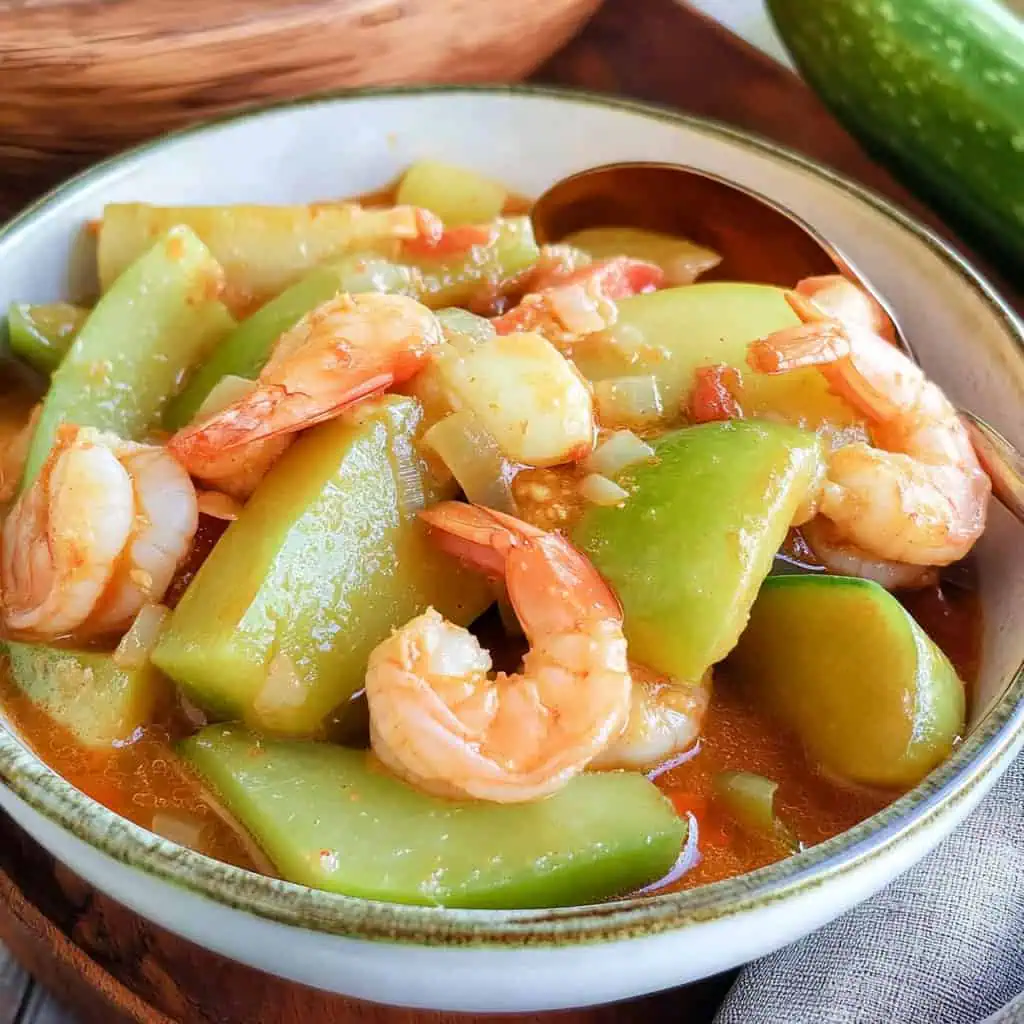
Why You'll Love This Recipe
- Quick and nutritious weeknight dinner option
- Budget-friendly ingredients
- Perfect balance of seafood and vegetables
- Naturally low in calories but filling
- Versatile dish that pairs well with various mains
- Authentic Filipino flavors
- One-pan recipe for easy cleanup
Ingredients
This recipe combines the mild, slightly sweet flavor of young bottle gourd with the natural umami of fresh shrimp. The aromatics (garlic, onion, and tomato) create a savory base, while the shrimp heads infuse the dish with rich seafood flavor.
Fish sauce adds depth without overpowering the delicate vegetables. This balanced combination creates a light yet satisfying dish that highlights the natural flavors of each ingredient while requiring minimal seasoning.
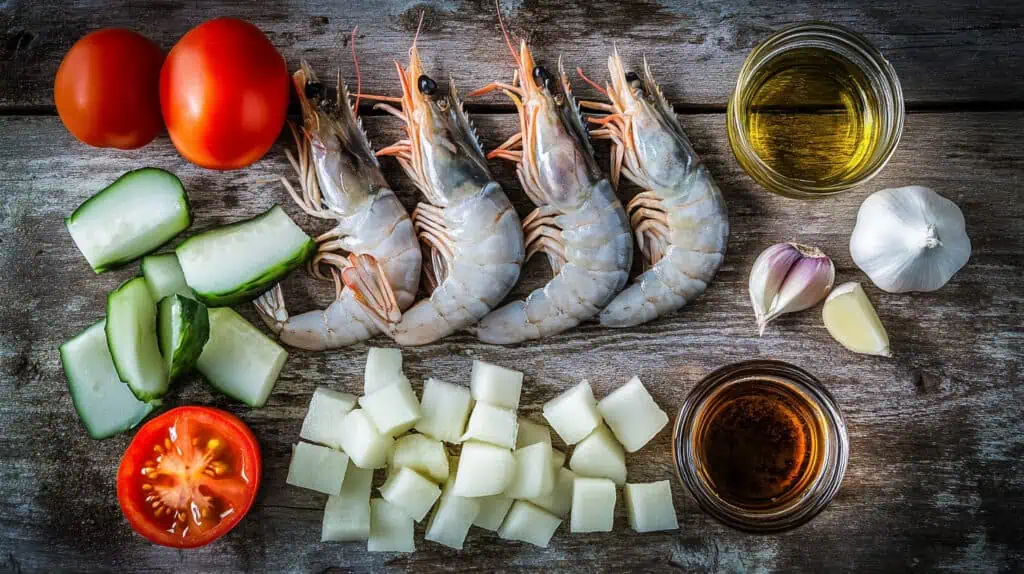
- ½ pound medium shrimp (about 15-20 pieces), head-on
- 2 medium upo bottle gourd (approximately 2 pounds)
- 1 medium onion, peeled and thinly sliced
- 2 cloves garlic, peeled and minced
- 2 medium tomatoes, chopped
- ¾ cup water
- 1 tablespoon cooking oil
- 1 tablespoon fish sauce (patis)
- Salt to taste
- Ground black pepper to taste
Equipment
- Large wok or deep skillet (kawali) - Provides ample space for stir-frying ingredients without overcrowding
- Sharp knife (kutsilyo) - Ensures clean cuts for precise vegetable preparation
- Vegetable peeler (panghimay) - Makes it easy to remove the tough outer skin of the bottle gourd
- Wooden spoon (sandok) - Allows for gentle stirring without breaking delicate ingredients
- Fine-mesh strainer (salaan) - Essential for extracting the flavorful juice from shrimp heads
- Cutting board (tabla) - Provides a stable surface for all your preparation work
- Measuring spoons (panukat) - Ensures accurate seasoning for consistent results
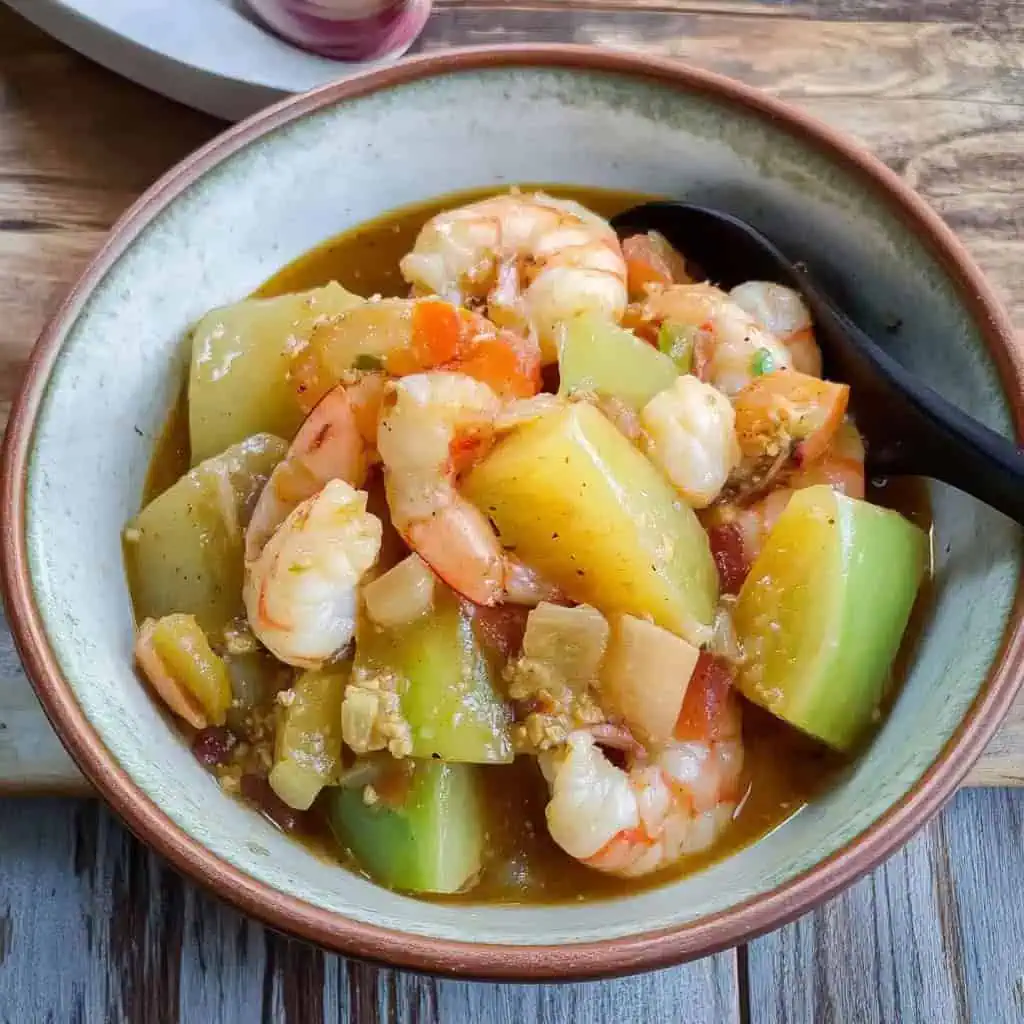
How To Make
- Begin by peeling and deveining the shrimp, keeping the heads. Place the shrimp heads in a bowl with ¾ cup water. Press the heads with a spoon to release their flavor, then strain the liquid and set aside.
- Wash your bottle gourd (upo) and cut off both ends. Peel the skin using a vegetable peeler. Cut the upo in half lengthwise, then cut each half again lengthwise. If you see large seeds or spongy parts in the center, remove them with a spoon. Cut the upo into half-inch thick pieces.
- Heat oil in a large pan over medium heat. Add onions and garlic, and cook until the onions turn clear, about 2-3 minutes. Add tomatoes and cook until they soften, gently mashing them with your spoon as they cook.
- Add fish sauce and let it cook for a minute. Add the peeled shrimp and cook just until they turn pink, about 2-3 minutes. Don't overcook them as they'll become tough.
- Add the sliced upo to the pan and stir gently. Pour in the shrimp liquid you set aside earlier. Let everything come to a gentle boil and cook without covering for 5-6 minutes. The upo should be tender but still slightly crisp when done.
- Add salt and pepper to taste, give everything a final gentle stir, and remove from heat. Serve hot with steamed rice. For the best flavor, enjoy immediately while the shrimp are tender and the vegetables are still crisp.

Tips from Lola's Kitchen
- Choose young upo carefully - Look for firm gourds with smooth, unblemished skin for the best texture.
- Test for tenderness - Press your fingernail gently into the upo; if it leaves a mark easily, it's young and tender.
- Treasure those shrimp heads - Never discard them as they contain intense flavors that elevate the entire dish.
- Keep it uncovered - Cook vegetables without a lid to maintain their delightful crispness.
- Watch for doneness - Stop cooking when upo is slightly firm as it will continue cooking from residual heat.
- Flavor building sequence - Always sauté aromatics first to build a proper flavor foundation.
- Gentle stirring technique - Use a folding motion rather than aggressive stirring to keep vegetables intact.
- Taste as you go - Adjust seasonings gradually, especially fish sauce which can quickly overpower.
- Serve immediately - This dish is at its peak freshness right off the stove.
- Consider your rice - Newly cooked rice pairs best with this dish, allowing it to absorb the flavorful sauce.
Substitutions
- No upo? Use patola (sponge gourd) or sayote (chayote) instead, adjusting cooking time as needed.
- Fresh shrimp unavailable? Substitute with dried shrimp (hibe) plus a shrimp bouillon for depth of flavor.
- Out of fish sauce? Use a combination of salt and a small amount of shrimp paste (bagoong).
- No fresh tomatoes? Canned diced tomatoes work in a pinch; drain excess liquid first.
- Dietary restrictions? For a vegan version, use firm tofu and mushrooms with vegetable broth.
- Watching sodium? Reduce fish sauce and increase acidity with a splash of calamansi or lemon juice.
- Need more substance? Add sliced carrots or bell peppers for extra color and nutrition.
Troubleshooting
- Problem: Dish is too watery
- Solution: Cook uncovered on higher heat to evaporate excess liquid, or remove some liquid and reduce it separately before adding back.
- Problem: Tough, rubbery shrimp
- Solution: Don't overcook the shrimp; remove from heat as soon as they turn pink. Consider adding them at the very end of cooking if they're small.
- Problem: Mushy upo texture
- Solution: Cut into larger, uniform pieces and avoid overcooking. Add upo later in the cooking process if you prefer firmer vegetables.
- Problem: Bland flavor
- Solution: Make sure to properly extract flavor from shrimp heads, and don't rush the sautéing of aromatics. A pinch of sugar can enhance overall flavor.
- Problem: Bitter aftertaste
- Solution: The upo might be too mature. Make sure to thoroughly remove seeds and spongy centers, which tend to develop bitterness.
Storage & Reheating
- Refrigeration - Store in an airtight container for up to 3 days in the refrigerator.
- Freezing not recommended - The texture of both upo and shrimp deteriorates when frozen.
- Gentle reheating - Warm over medium-low heat on the stovetop or microwave for 1-2 minutes.
- Moisture maintenance - Add a splash of water when reheating if the dish seems dry.
- Freshening up - A squeeze of fresh calamansi juice can brighten flavors when reheating.
- Serving leftovers - Consider repurposing leftovers as filling for omelets or as a topping for fresh rice.
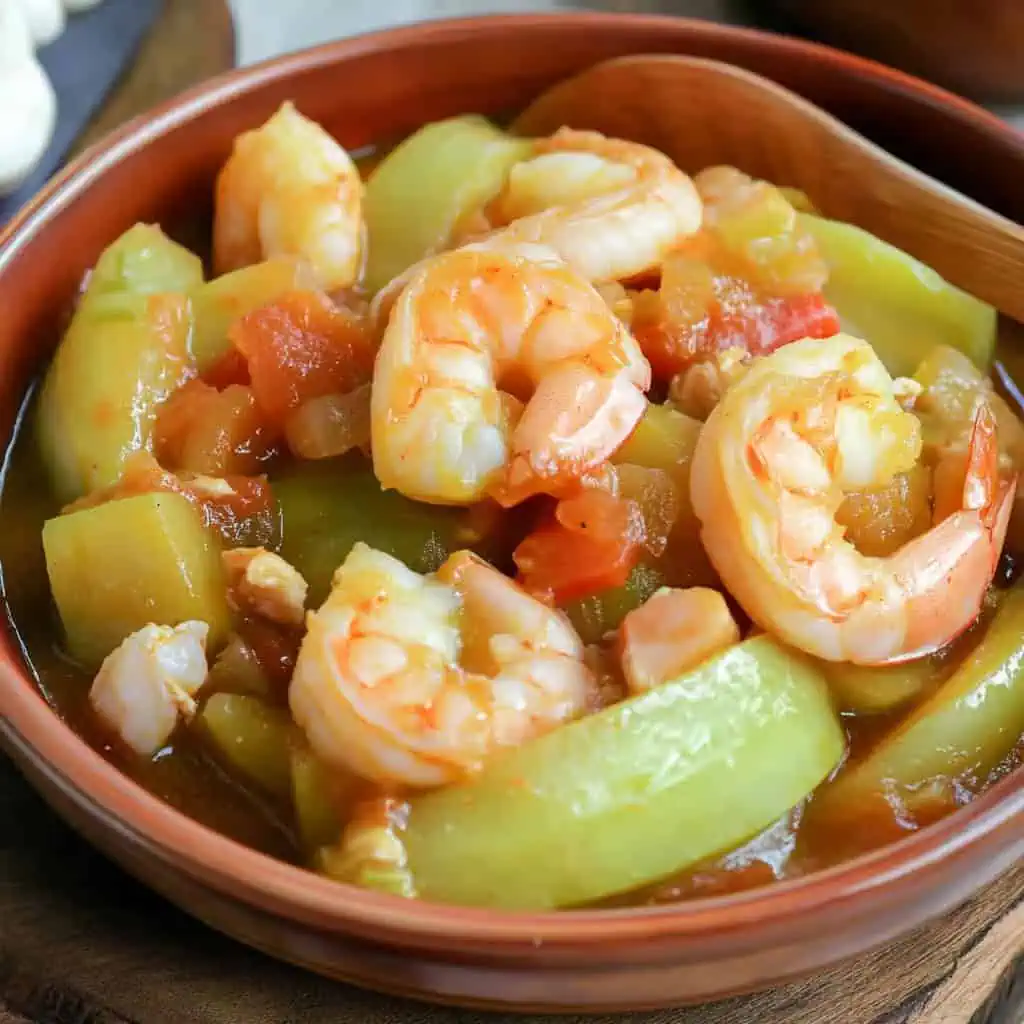
FAQ
How do I know if my upo is too mature?
If the seeds are large and hard, and the flesh is very spongy, the upo is mature. Choose one with small, tender seeds for the best texture and flavor.
Can I make this dish in advance?
Yes, but it's best served fresh. If making ahead, slightly undercook the vegetables and reheat gently before serving.
Is this dish keto-friendly?
Yes, upo is naturally low in carbs. For a stricter keto version, reduce the onions and tomatoes and increase the oil slightly.
Can I use frozen shrimp?
Yes, but add a small amount of shrimp bouillon for extra flavor since you won't have heads for stock. Thaw completely before cooking.
What makes this dish authentically Filipino?
The combination of vegetables and seafood, the use of fish sauce, the extraction of flavor from shrimp heads, and the balance of savory with subtle sweetness are all hallmarks of traditional Filipino cooking.
How can I make this dish more filling?
You can add more protein by increasing the amount of shrimp or adding ground pork. You can also serve it with garlic fried rice instead of plain rice.
Is bottle gourd available year-round?
In tropical climates, yes. In temperate regions, it's more seasonal, usually available in summer and early fall. Check Asian markets for the most reliable supply.
Can I use this recipe for meal prep?
This dish is best enjoyed fresh, but if used for meal prep, keep the components separate until ready to eat, with shrimp and sauce stored separately from upo.
Related
Looking for other recipes like this? Try these:
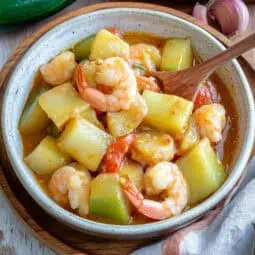
Ginisang Upo at Hipon (Filipino Bottle Gourd and Shrimp Stir-fry)
Equipment
- Large wok or deep skillet (kawali) for stir-frying with enough space
- Sharp knife (kutsilyo) for precise cutting of vegetables
- Vegetable peeler (panghimay) for preparing the upo
- Wooden spoon (sandok) for gentle stirring without breaking ingredients
- Fine-mesh strainer (salaan) for extracting shrimp juice
- Cutting board (Tabla) for preparation work
- Measuring spoons (panukat) for accurate seasoning
Ingredients
Main Ingredients
- ½ pound medium shrimp hipon, head-on [about 15-20 pieces]
- 2 medium upo bottle gourd [approximately 2 pounds]
- 1 medium onion sibuyas, peeled and thinly sliced
- 2 cloves garlic bawang, peeled and minced
- 2 medium tomatoes kamatis, chopped
- ¾ cup water tubig
Seasonings
- 1 tablespoon cooking oil mantika
- 1 tablespoon fish sauce patis
- Salt asin to taste
- Ground black pepper paminta to taste
Instructions
- Begin by peeling and deveining the shrimp, keeping the heads. Place the shrimp heads in a bowl with ¾ cup water. Press the heads with a spoon to release their flavor, then strain the liquid and set aside.
- Wash your bottle gourd (upo) and cut off both ends. Peel the skin using a vegetable peeler. Cut the upo in half lengthwise, then cut each half again lengthwise. If you see large seeds or spongy parts in the center, remove them with a spoon. Cut the upo into half-inch thick pieces.
- Heat oil in a large pan over medium heat. Add onions and garlic, and cook until the onions turn clear, about 2-3 minutes. Add tomatoes and cook until they soften, gently mashing them with your spoon as they cook.
- Add fish sauce and let it cook for a minute. Add the peeled shrimp and cook just until they turn pink, about 2-3 minutes. Don't overcook them as they'll become tough.
- Add the sliced upo to the pan and stir gently. Pour in the shrimp liquid you set aside earlier. Let everything come to a gentle boil and cook without covering for 5-6 minutes. The upo should be tender but still slightly crisp when done.
- Add salt and pepper to taste, give everything a final gentle stir, and remove from heat. Serve hot with steamed rice. For the best flavor, enjoy immediately while the shrimp are tender and the vegetables are still crisp.
Tips from Lola's Kitchen
- Choose young, firm upo with smooth, unblemished skin
- Press your fingernail gently into the upo - if it leaves a mark easily, it's young and tender
- Don't discard shrimp heads - they contain intense flavors
- Cook vegetables uncovered to maintain crispness
- Stop cooking when upo is slightly firm as it will continue cooking from residual heat
Nutrition
The Story Behind Ginisang Upo at Hipon
Growing up in provincial Filipino homes, Ginisang Upo at Hipon represents more than just a dish - it's a testament to the resourcefulness and ingenuity of Filipino home cooks. Bottle gourd, locally known as upo, has been a staple in Filipino backyard gardens for generations, prized for its versatility and ability to thrive in our tropical climate. This climbing vine, which produces large, pale-green gourds, became a cornerstone of Filipino vegetable dishes, particularly during the rainy season when these plants flourish abundantly.
The combination of upo and hipon (shrimp) emerged from coastal and riverside communities, where fresh seafood was readily available from local palaisdaan (fishponds) and markets. Fishermen would bring home smaller shrimp, which housewives discovered were perfect for everyday dishes that needed to feed large families economically. The marriage of these two ingredients - the subtle sweetness of young upo and the rich, briny flavor of fresh shrimp - created a dish that embodied the Filipino talent for transforming simple ingredients into satisfying meals.
In many Filipino households, this dish tells the story of sustainable living before it became a global movement. Families would grow upo on bamboo trellises in their backyards, harvesting the gourds young when their flesh was most tender. The practice of using shrimp heads to create a flavorful stock speaks to the Filipino principle of 'walang sayang' (no waste), where every part of an ingredient is utilized to its fullest potential. This cooking technique has been passed down through generations, with each family adding their own subtle variations while maintaining the dish's essential character.
Today, Ginisang Upo at Hipon continues to be a beloved presence in Filipino homes, bridging the gap between traditional cooking methods and modern nutritional awareness. Its enduring popularity lies not just in its delicious taste, but in its ability to remind Filipinos of their culinary heritage - a heritage where fresh, local ingredients and simple cooking techniques come together to create dishes that nourish both body and soul. Whether served in urban apartments or provincial kitchens, this dish remains a testament to the enduring wisdom of Filipino home cooking.






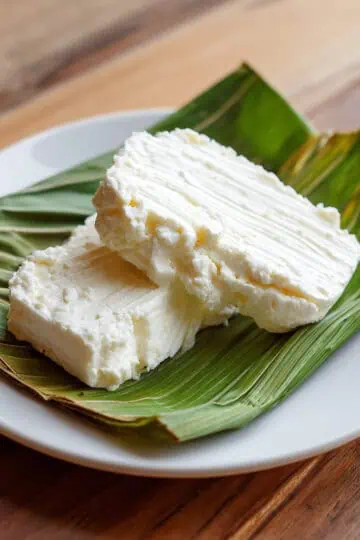
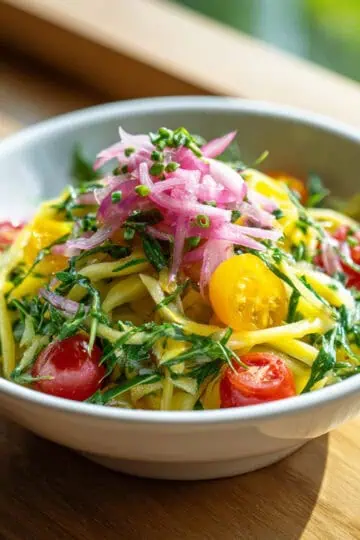
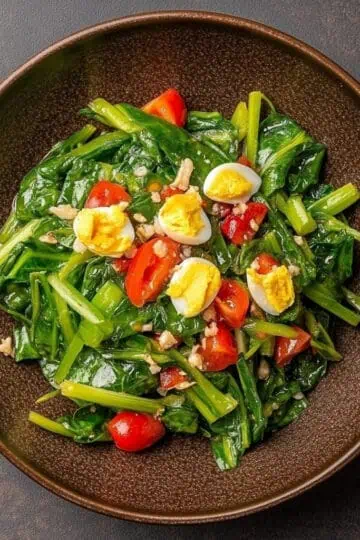
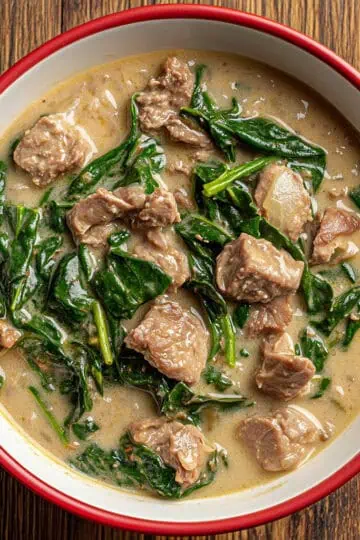
Comments
No Comments